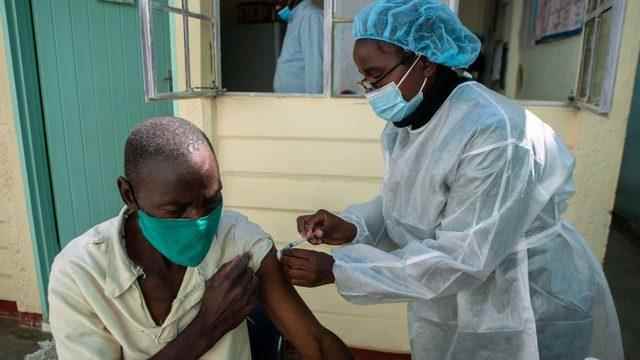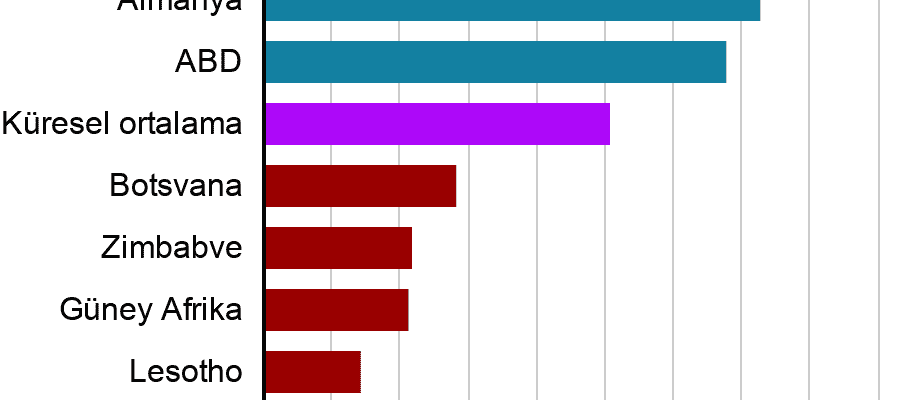Since the Omicron (Omikron in Turkish) variant of the coronavirus was first noticed in South Africa, it has led many countries to return to travel restriction measures.
Gordon Brown, one of the UK’s former prime ministers, says that the new variant is not a surprise, and that the results of rich countries not giving vaccines to poor countries will continue to be seen in this way.
So, are there enough vaccines in countries in the south of the African continent? Can these vaccines be delivered to humans?
How are the vaccination rates?
The average vaccine dose per person worldwide is around 1.
While this amount increases in rich countries, poor countries pull the average down.
In South Africa, only 42 vaccines per 100 people have been given.
In some countries in the region, this rate is even lower. In Lesotho, 30 doses were given to every hundred people, and 25 doses in Namibia.
### Are there enough vaccines available?
African countries have had to rely on bilateral agreements, donations and the Covax program to obtain adequate vaccines.
The number of vaccines sent to these countries, which had difficulties in getting vaccines through Covax earlier this year, started to increase since the summer months.
Although the number of vaccines sent to African countries is increasing, the Global Alliance for Vaccines (Gavi) is announcing that these vaccines are delivered in an irregular manner and that many near-expiration vaccines are delivered unexpectedly.
This makes it very difficult for countries to plan their vaccination campaigns.
Last week, South Africa could not accept new incoming vaccines because it had too many vaccines in stock.
Speaking to Reuters, Ministry of Health officials announced that there are 16.8 million doses of vaccine in South African stocks.
Some African countries had to throw away their vaccines because their expiration date has passed.
According to the data of the Airfinity research project, 384 million doses of vaccine have been delivered to Africa, which has a population of more than 1.2 billion, to date.
The amount of vaccine delivered to South Africa, which has a population of 40 million, was 32.5 million doses.
Botswana with a population of 2.3 million received 2.4 million doses, and Namibia with a population of 2.5 million sent one million doses of vaccine.
Why so few vaccines?
Irregular shipment of vaccines is definitely a problem.
But South Africa’s failure to receive sent vaccines points to another problem.
South African Health Minister Joe Phaahla says fake news has shaken trust in vaccines, especially among young people.
There may be concerns about the safety of vaccines due to disinformation or lack of information.
However, the probability of having a serious health problem after vaccination is extremely low. In addition to the risks of catching Covid-19, there is no doubt about it.
A study by the South African Ministry of Health revealed that some people think that “vaccines don’t work” because people who are vaccinated can also have Covid-19.
There is a possibility that people who are vaccinated may also have Covid-19, but these people overcome the disease with much milder symptoms than those who are not vaccinated.

Access to rural areas
Side effects and I think that vaccines are safe are the top two reasons why people don’t get vaccinated.
But another reason for the slow pace of vaccination in Africa is the difficulty of delivering vaccines to rural areas.
According to a report for the Ministry of Health, rural areas in the northwestern part of South Africa do not have access to vaccination centres.
In some remote areas, enough vaccines cannot be sent to meet the demand.
Sarah Downs, who works on vaccines and infectious diseases at Wits University in Johannesburg, states that there is more vaccine hesitation than vaccine opposition across the country.
According to Downs, the inability of vaccination centers to get the vaccine to people’s feet, the lack of public transportation facilities to easily reach vaccination centers, and the fact that some people think that vaccines are paid for have led to a low level of vaccination.
All these factors can lead to extraordinary situations: for example, vaccination hesitancy is more common among whites in the country, but whites are more vaccinated than blacks because whites have better access to the vaccine.
